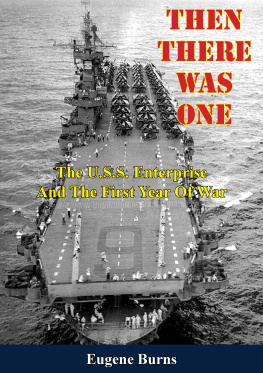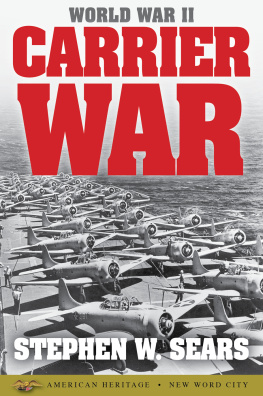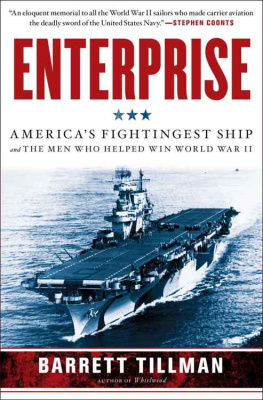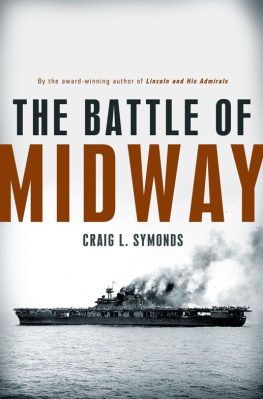

This edition is published by PICKLE PARTNERS PUBLISHINGwww.picklepartnerspublishing.com
To join our mailing list for new titles or for issues with our books picklepublishing@gmail.com
Or on Facebook
Text originally published in 1944 under the same title.
Pickle Partners Publishing 2015, all rights reserved. No part of this publication may be reproduced, stored in a retrieval system or transmitted by any means, electrical, mechanical or otherwise without the written permission of the copyright holder.
Publishers Note
Although in most cases we have retained the Authors original spelling and grammar to authentically reproduce the work of the Author and the original intent of such material, some additional notes and clarifications have been added for the modern readers benefit.
We have also made every effort to include all maps and illustrations of the original edition the limitations of formatting do not allow of including larger maps, we will upload as many of these maps as possible.
THEN THERE WAS ONE: THE U.S.S. ENTERPRISE AND THE FIRST YEAR OF WAR
BY
EUGENE BURNS
TABLE OF CONTENTS
Contents
DEDICATION
To
JOHN CROMMELIN
and
HIS BREED OF MEN
THEN THERE WAS ONE
Then there was one patched-up carrierVice Admiral Thomas A Kinkaid, referring to the situation in the Pacific in November, 1942.
ACKNOWLEDGMENTS
Others made this book possible. When I left home at fourteen, others helped me to get my education. At school, others taught me to write. When war came, The Associated Press gave me one of the greatest assignments of the war. Aboard the Enterprise , such men as Lieutenant Hubert Harden, USN, Commander Richard W. Ruble, USN, Captain O. B. Hardison, USN, and Rear Admiral Thomas C. Kinkaid, USN, helped me gather material and gave me expert counsel. During the writing, Lieutenant Robert Giroux, USNR, helped me shape this book for Harcourt, Braces hands. Commander Waldo Drake, USNR, of the Public Relations Office, Pearl Harbor, and the Fleet Chief Censor, Lieutenant Commander Murray Ward, USNR, read the manuscript carefully and put up with my unbridled enthusiasms with comparative good humor. The Bureau of Public Relations of the Navy Department provided photographs, many of them previously unpublished, with which to document the story of the Enterprise. My wife, Olga, spent many hours reading and rereading the manuscript at its various stages. Finally, I make acknowledgment to the real heroes of this book who helped bring the Big E (and my battle notes) out of battlethe officers and men of the U.S.S. Enterprise.
EUGENE BURNS
Tantalus,
Honolulu, Oahu
AUTHORS NOTE
Of the many fine ships in our Navy doing heroic yeoman service for their country on the oceans of the world, fate allows only a few to become great. Many become famous because they find themselves at the right place at the right time, and they have what it takes. But only a few find themselves at the right place at the right time again and again, until their story is legendary. Such a ship is the Enterprise.
To the Navy the Big E has been a legend for a long time. To the public parts of the legend are known, but the whole story has never been told. In this book I have attempted to tell that story. It will become obvious that it differs from all other carrier stories in several important respects. First, it is the only carrier story which encompasses the entire first year of the war in the Pacific. The Big E was the only carrier there on December 7, 1941steaming into Pearl Harbor on return from a mission at Wake; and, almost a year later, she was that one patched-up carrier in action that Admiral Kinkaid refers to, the only major carrier we had left in combat to hold the long, thin Pacific line. Second, only the Enterprise was in every carrier action save one (Coral Sea) in the first year of war. That is to say, no other carrier was at all these places at these times: the Marshalls in February, 1942, Wake later that month, Marcus in March, the Tokyo raid in April, the Battle of Midway in June, the first landing at Guadalcanal on August 7-8, the Battle of the Stewart Islands on August 24, the Battle of Santa Cruz, October 26, and the decisive Battle of the Solomons on November 14-15. Finally, the Enterprise story is unique in this respect: it is the only carrier story in book form which is unfinished. The same old Big E is still in there pitching and the second half of her story, which cannot now be disclosed for reasons of security, may, when the war against Japan is won, be found to equal the first half in heroism and accomplishment.
There are two small points I wish to mention here. The ranks and rates of most of the officers and men mentioned in the text are outdated but I have retained them because, first, I believe they want it that way and, second, it is an impossible task to keep abreast of the many promotions and advancements effected since the events in this book took place. The other point is the subject of the ships nicknames. There are only two correct ones, the Big E and the Lucky E, and the former is more often used. I have never heard anyone aboard refer to her as the Old Lady; neither has any of the ships company that Ive spoken to. This soubriquet originated in Washington and continues to appear in articles, editorials and news stories; though certain sections of the press and Navy Department may feel that its a good nickname, the men of the Enterprise will have none of it. There was also, of course, The Galloping Ghost of the Oahu Coast, which made good copy but which no sailor would be likely to use as a familiar name for his ship any more than he would a phrase like Queen of the Flattops. So when it comes to nicknames for the Enterprise, you can take your choice. Its the Lucky E or the Big E and nothing else will do.
It had been my desire to include in this volume a complete roster of the officers and enlisted men who served on the Enterprise in the first year of the war. Such a fist would have included nearly six thousand names, and would have required some sixty extra pages as well as many days spent in the compilation of the list by the Navy Department. On neither ground did it seem justifiable in time of war. But when I speak of the exploits of an individual or a group, the men of the Enterprise will, I hope, know that I am thinking of everyone from Sky Control to boiler room who helped to make those exploits possible.
1NOVEMBER 28DECEMBER 31, 1941
1. Battle Order Number One
The plane bearing Peace Envoy Saburo Kurusu to the United States was approaching Wake Island. Kurusu could not see the three tiny islets below-Peale, Wilkes, and Wakestrung together in the shape of a wishbone; the curtains in the Pan American Clipper had been intentionally drawn and fastened. Had they been open, he might have seen the new installations of the air base and the uncompleted landing-strip under furious construction. Perhaps he smiled at the thought that the antiquated, pre-World War I guns, which he knew were there, could not be elevated to shoot at planes.
The Clipper settled to a smooth landing and taxied through the lagoon to Peale, from whose newly completed mooring Kurusu was quickly driven in a closed car to the Pan American Hotel. There he signed his name in the register, in English and Japanese, taking a whole page. The Clipper was delayed on the following day due to engine trouble; Kurusu cooled his heels in his room. When he finally left to continue on his Mission of Peace to Washington, it was doubted that he had seen the new airfield. If he did manage to see it, he must have noted the absence of combat planes.
Next page












